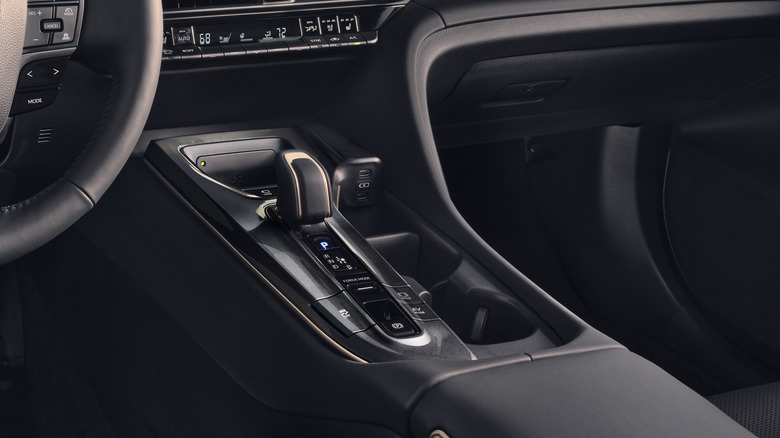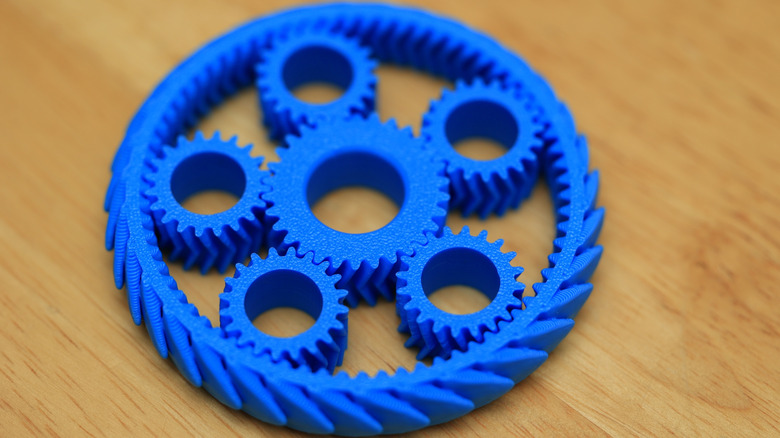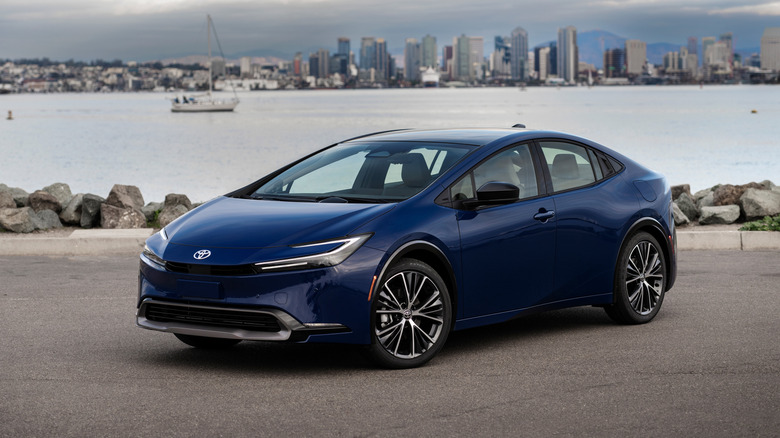How Does Toyota's E-CVT Transmission Work? (And Which Models Come With It?)
Toyota introduced its first continuously variable automatic transmission CVT, in itself a type of automatic transmission, in 2000, dubbed the K110. Some Toyota models that use a CVT include the Camry, Corolla Cross, Grand Highlander, Prius, Sienna, and Venza. Toyota also utilizes a CVT on hybrid vehicles, though it's slightly different from the transmission you'll find in their gasoline-powered models.
Toyota's hybrid models feature e-CVTs, which stands for electronic continuously variable automatic transmission. E-CVTs function similarly to how CVTs function, though there is one major difference. The way that a CVT works is by eliminating the set number of gears in the gearbox, and using a pulley system that gives the transmission an infinite number of gear ratios, with no perceptible change when the vehicle shifts.
An e-CVT works by utilizing two electric motors mated to a transmission and planetary gear shaft, as well as the engine, respectively. When the planetary gear shaft rotates, it provides the required gear ratio to rotate. That may not make complete sense now, but let's dive deeper into it.
Details of the e-CVT
According to Lexus, which is the luxury brand of Toyota, the e-CVT constantly analyzes the vehicle's speed, the road conditions, how much power the engine is producing, and how the driver is piloting the vehicle, then the system selects the most efficient gear ratio for that specific moment. After that specific moment has passed, the e-CVT goes through the whole analysis again, and again.
The way the system is able to do this is via a combination of planetary gears. Think of a planetary gear system like our solar system, with one major gear, or the sun, at the center, and four smaller gears, or planets, surrounding the inner gear. This is different from how a CVT works, which is via a drive belt and pulley arrangement.
Using an e-CVT instead of a CVT provides the vehicle with improved efficiency via the electric motors. E-CVTs are typically more reliable than a CVT as well, due to e-CVTs not using belts and chains. However, e-CVTs are not perfect. Like any CVT transmission, you have to maintain it properly. They require transmission fluid changes, since they run hot, and since the system also uses a battery, it's important to make sure owners maintain that as well, as battery degradation is always possible.
What Toyota vehicles have e-CVTs?
The only Toyota vehicles that have e-CVTs are the brand's hybrid models. This includes SUVs like the RAV4 Plug-In Hybrid and the RAV4 Hybrid, both super popular entrants into the compact SUV segment. Other Toyota SUVs that have e-CVTs include the Highlander Hybrid, Grand Highlander Hybrid, Crown Signia, and the Corolla Cross Hybrid.
As for cars, Toyota includes the e-CVT on the Prius, Prius Plug-In Hybrid, Corolla Hybrid, and one of the brand's newest models, the Crown. The Toyota Crown, which went on sale in 2023, offers unique styling and plenty of interior tech. The final vehicle that Toyota sells with the e-CVT is the brand's only minivan offering, the Sienna. Offering some of the best fuel economy numbers among minivans, the Toyota Sienna is also one of the few minivans you can get with all-wheel drive.
While there is nothing after the e-CVT on the horizon at the moment, automotive technology continues to accelerate. Until a more efficient transmission is invented, the e-CVT offers buyers one of the most efficient ways of driving.


